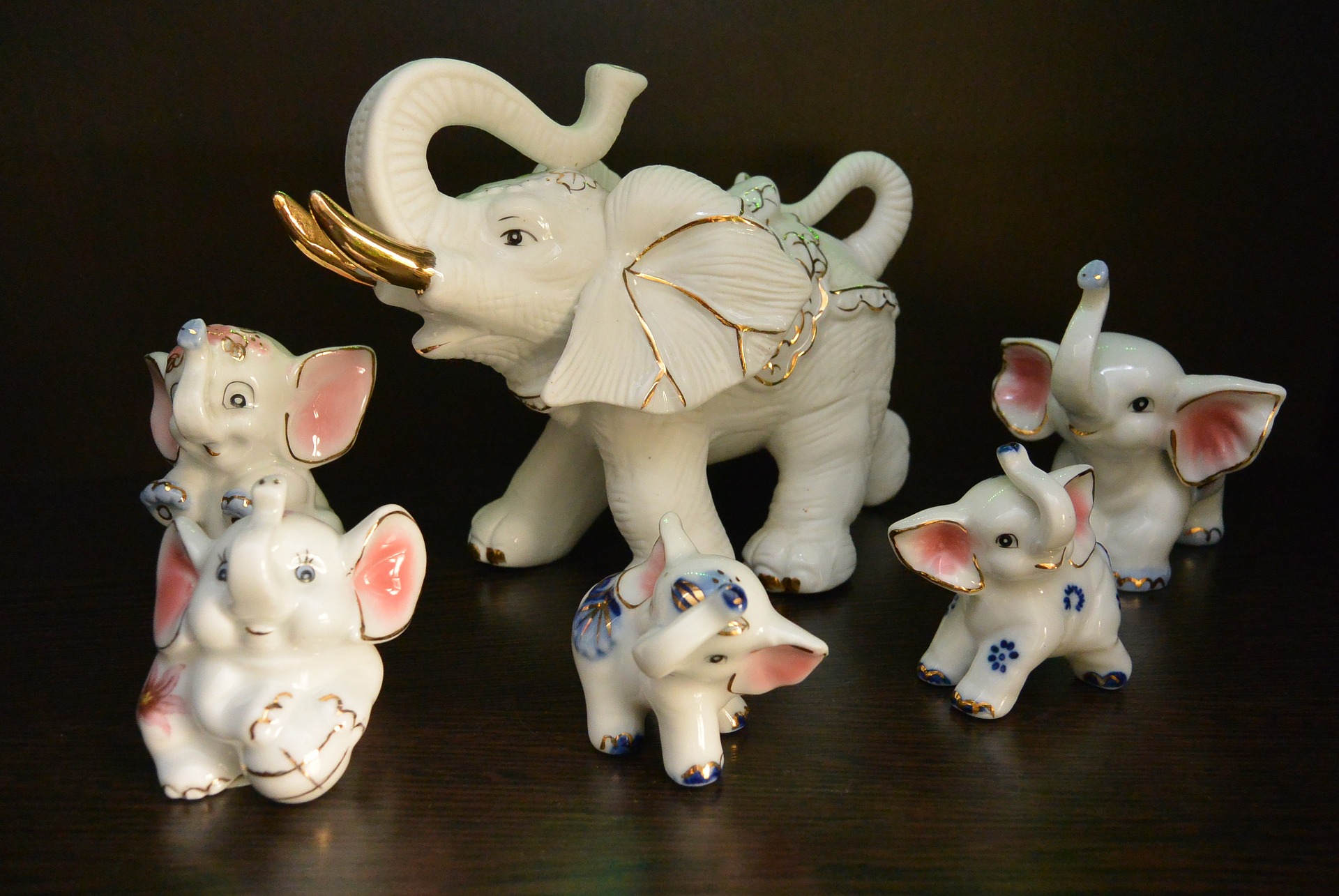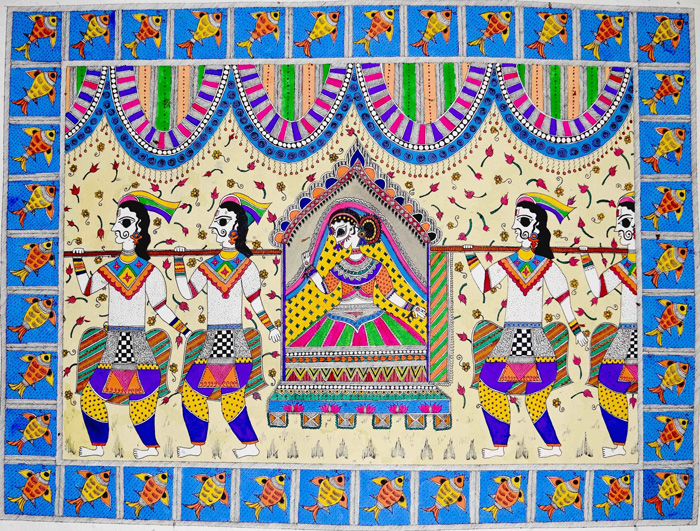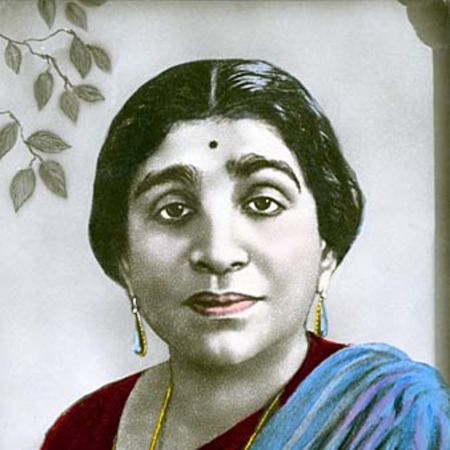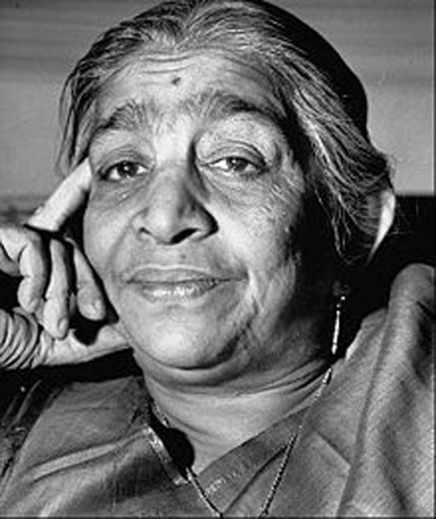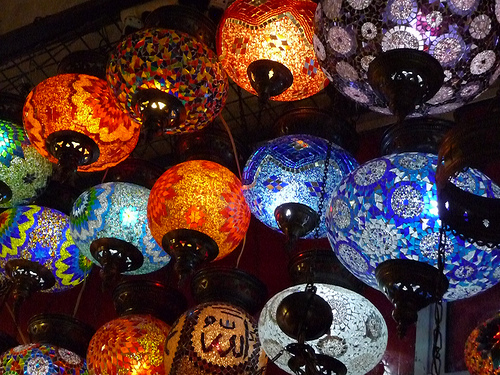The birth of the daughter of pre-independent India, Sarojini Naidu(13 February 1879 – 2 March 1949), was at a crucial time when India was laden with unfathomably tormenting issues. Sarojini Naidu suffered in making India an independent nation, happily estranged from the British empire and to become the woman that she is, she had to contest with innumerable stereotypical notions of being a woman and thus, fragile and incapable, as supported by Indians, to be considered capable of fighting her own battles and those of her own country and, more importantly, to be heard and taken seriously. Called the “Nightingale of India”, Sarojini Naidu, is one of the most influential woman patriot, freedom fighter and poet of modern India. With her poems, she tries to educate the eradication of some sickly thoughts that are bred India. But, in her poem, “Indian Weavers”, Sarojini Naidu portrays a different genre, far removed from patriotism, but too close to life and death, and all that lies in between the only two truths that govern the existence of each being, that is, life and death. The poem digresses from the theme of the majority of the poet’s poems, which revolve around India and focuses more on life as we know it – its philosophy, its truth.
“Indian Weavers” Summary and Analysis by Sarojini Naidu
The poem can be folded into three parts – each stanza represents the three stages of life. Each stage represents childhood, youth and old age, respectively. Or more appropriately, birth, living life, and death appear to have been signified as the three stages of the cycle of life. Nonetheless, we find that the poem has been structured in a question-answer pattern. The poet asks three questions to the weavers and they answer accordingly, to put it simply. However, in the questions and answers lies the temperament of the poem.
In the first stanza, the poet enquires about the weavers, weaving while the rays of sunlight hit the earth. She is inquisitive since they are weaving, or working when it is too early to even be awake. Moreover, the garment that is being prepared seems profoundly “gay”( happy) to the poet. Thus, her inquiry seems to be obvious. And, then the weavers answer by saying that they are making a garment for a “new-born child” which is of the color blue – that blue, which the halcyon bird has been dipped in – gay and merry and bright in its innocent appearance. The fact that the weavers weave “at the break of day” is very important. The start of a new day has been used as a metaphor for the start of a new life. The halcyon bird( a mythical bird, could be kind of Kingfisher as well) has been used as a simile, to give us a hint about the majestic royalty that is symbolic of the color blue. Majestic and royal because a child is the apparition of God himself. Thereby, one can easily guess that the occasion of being born on the earth is being celebrated in the first stanza of the poem, signifying the arrival of new hope to the world.
The second stanza of the poem is in every manner more significant since it deals with that part of our life in which we are most active, each as if capable of conquering the world. The poet again goes on to ask the weavers, what have they been weaving rather why have they been weaving, at the “fall of night”( which should stand for the evening), such a bright garment. To which, the weavers announce that they are making the “marriage-veils of a queen”, that is to be feathery thin, and “Like the plumes of a peacock, purple and green”. Thus like the feathers of a peacock, the veil has to be engulfed with the color purple and green. Purple may signify the extravagance of a kingly kind, showy and bedazzling. But the color green could stand for Nature and also for youth, prosperity, and beauty. For youth lies in the epitome of our life, when all can be done, dreams can be dreamt and realize. It symbolizes hope. It could be that the poet tries to bring our attention to the fact that though the night is falling, and the youth of each’s life is passing, we tend to fight the aging by wearing bright and cheerful things, to make ourselves happy and cloaked from what is to come. Being devoid of gloom, we transcend ourselves to the beauty that life itself is.
Since night itself has no light, the youth by wearing something bright, are providing light to produce a ray of hope ( that rests in the color green, whereas, purple here stands to signify the shiny nature of youth, which eliminates darkness with its bright shine) in the dark. However, the mention of “marriage-veils” could suggest the stepping of the youth into adulthood, margined by responsibilities. Thus, purple and green refer to the two parts of youth. The poet first mentions purple because, it stands for the early phase of youth, when one is devoid of many responsibilities and, is dressed in their best attire (which may also try to give the idea that it is the time when they are their best selves). And, green stands for the later part of the youth when marriage and thus, responsibilities make one’s life more settled and calm, filled with blissful moments to of love and care. Therefore, this stanza for the mirth, and the free and vibrant nature of youth which afterward become more grounded and joyous has been hinted in this stanza.
The last stanza of the poem occupies our minds, the most and leaves us brooding over the ultimate end of each of our lives. In the third stanza, the poet asks the weavers regarding why are they weaving at the dead of night, when nature is still and its very cold and chilly. The attitude of the weavers seem to have altered, as they are extraordinarily quiet and calm in their reply, when they go on to say that they are making a lifeless being’s funeral shroud, for life has left the body of the dead man and one can suppose that the man has been engulfed by the peace of his soul. On this saddening and grieving occasion, the weavers are making the “ dead man’s funeral shroud”, which is as white as a bird’s feather, and as white as a cloud can be. Interestingly, for the first and the only time in the poem, the poet notes the expressions of the weavers – they are “ solemn and still”.
This could indicate that they are, in showing respect to the departed, are going about their work in resolute, silence and solemnity. The word “still” may stand for the immobility of the dead. “White” has been repeated twice in the second last line, signifying purity and old age, coming of the being, more close to death and to God, as they call it. The use of the word, “feather” obviously denotes that since the body is now lifeless, there is no weight contained in that man. He is as light as a feather. Again, the use of the word “cloud” could indicate, going by the general notions, that the soul of the dead man has reached the domain of God, that is supposed to be beyond and through the clouds. Thus, the last stanza emphasizes on the last stage of a man, that is old age and eventual death.
Throughout the poem, we find metaphors and similes aided to the becoming of the poet for what it is. Though there is one thing that is most debatable and interesting, that is the identity of the weavers. Why weavers? Why Indian weavers? It is noteworthy that, according to Greek mythology, the Fates were personified as three very old women who spin the threads of human destiny. Their names were Clotho (Spinner), Lachesis (Allotter), and Atropos (Inflexible). Clotho spun the “thread” of human fate, Lachesis dispensed it, and Atropos cut the thread (thus determining the individual’s moment of death).
Thus, is it not very clear that each stanza represents one the Fate women and is deliberately arranged in the same order, in terms of birth, life, and death, as the Fate women are assigned their tasks. Clotho spins the thread of human fate, thus, deciding on when the being is to be born and is born. Similarly, Lachesis dispenses it, deciding on their longevity and the period of their youth, lastly, the unmovable Atropos, who cuts the thread of life, that is bestowed death on the being, and that cannot be altercated. Thus, by the name of the poem, that is, “Indian Weavers” the poet could suggest the Indian version of Fates or an amalgamation of both Greek and Indian mythology, responding to a man’s cycle of life – the makers of destiny. For it has always been said that the Divine holds the thread of a man’s life. The poem, “Indian Weavers”, with its broadness of view, accommodates both the personal as well as the universal, in one knot, that life is. Liked going through the summary and analysis of Indian weavers?
Some online learning platforms provide certifications, while others are designed to simply grow your skills in your personal and professional life. Including Masterclass and Coursera, here are our recommendations for the best online learning platforms you can sign up for today.
The 7 Best Online Learning Platforms of 2022
- Best Overall: Coursera
- Best for Niche Topics: Udemy
- Best for Creative Fields: Skillshare
- Best for Celebrity Lessons: MasterClass
- Best for STEM: EdX
- Best for Career Building: Udacity
- Best for Data Learning: Pluralsight
